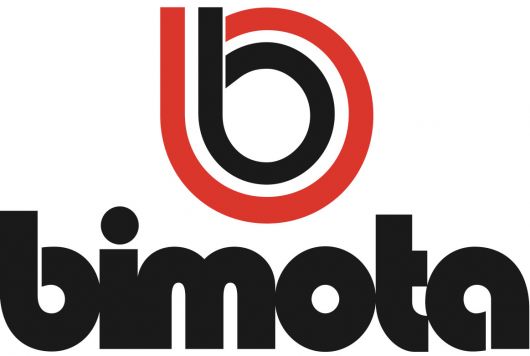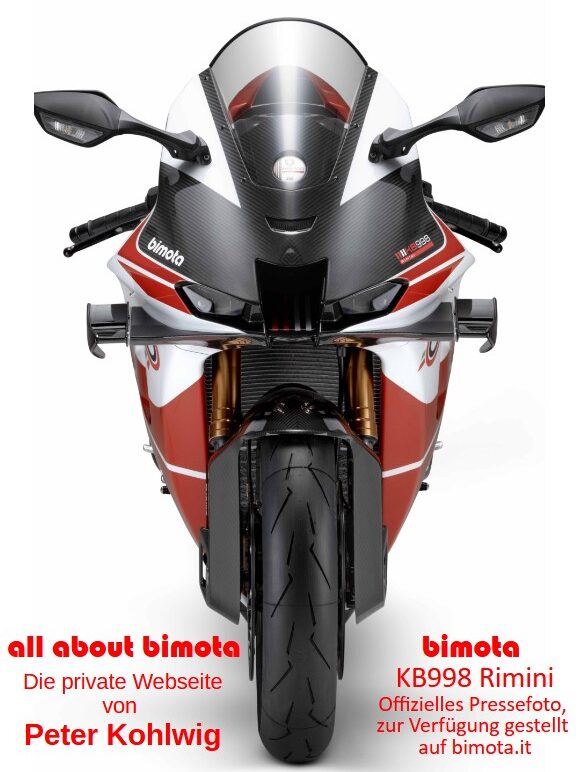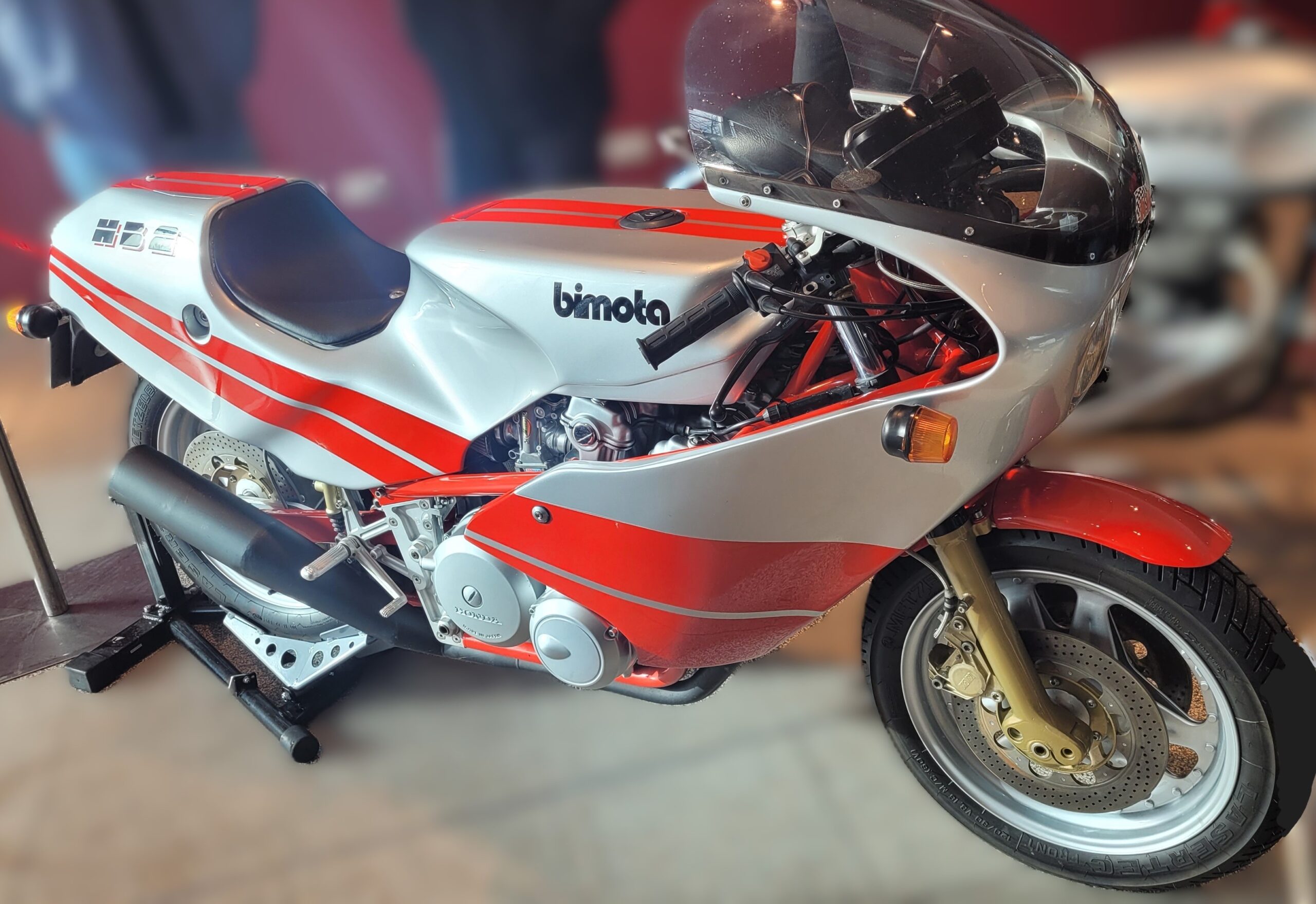
| Designer | Massimo Tamburini | First presentation | Milan 1981 |
| Production period | 1982 – 1983 | Production numbers | 193 thereof 140 as kits |
| Power | 69 KW (95 PS) | Displacement | 902 ccm |
| Topspeed | 231 km/h | Weight | wet 229 kg dry 214 kg |
| Price | 28.500 DM (1982) | Colours | 161 white / red 31 white / red / blue |
| Technical basis | Honda CB 900 |
In 1982, Bimota introduced the HB2 with a new frame design, which would be used 1,044 times across six different models over the following seven years.
The four-piece frame consists of an upper main frame and a lower subframe, both made of chrome-molybdenum steel tubes, along with two lateral aluminum connection plates that are bolted to the steel frame. This frame design allows for the integration of all major Japanese four-cylinder engines from the early 1980s by adapting:
- The lower engine mounts in the subframe,
- The aluminum plates for swingarm pivot adjustment, and
- The rear engine mounts, which are bolted to the aluminum plates.
The six models built using this concept are:
- HB2 with Honda CB900F
- HB3 with CB1100F bzw. R
- KB3 with Kawasaki Z1000 J
- SB4 with Suzuki GSX 1100 E
- SB5 with GSX 1100 EF
- YB5 with Yamaha FJ1200
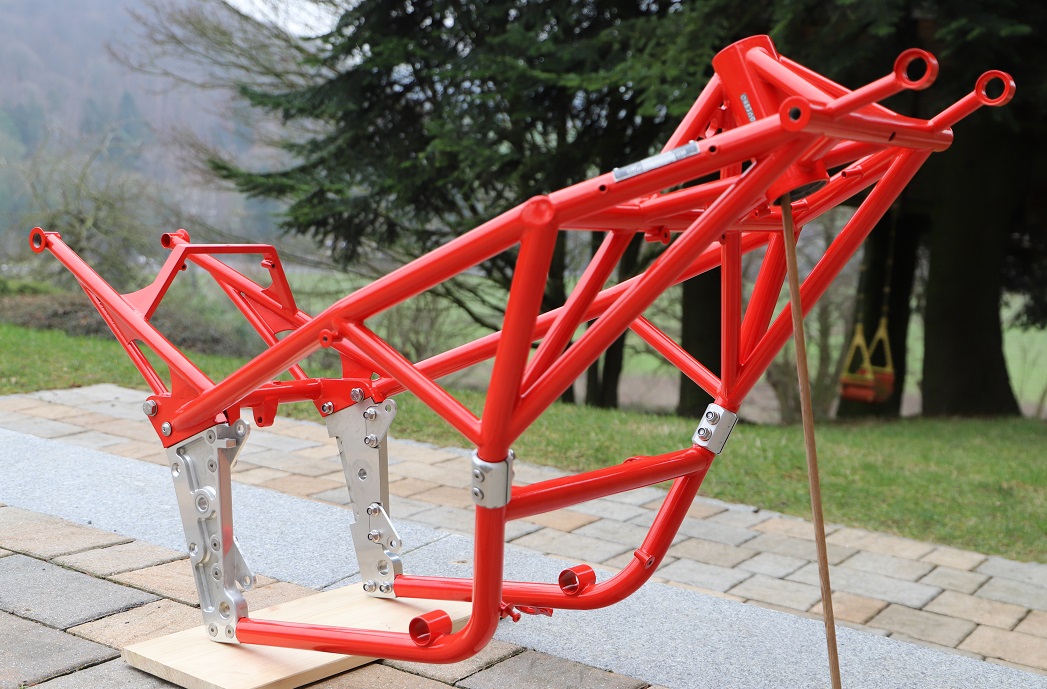
The primary goal of any frame design is to provide a torsionally rigid connection between the front and rear suspension. This is achieved here through the integration of the engine as a load-bearing element, rigid triangular connections, and the incorporation of the steering head with eight struts. The frame itself weighs only 16 kg and comes powder-coated from the factory. The steel tubes are expertly welded by hand using shielded gas welding.
This level of perfection extends to the attached components. The connection plates, triple clamps, footpeg brackets, and even small details such as the turn signal mounts and washers are made of high-quality aluminum, meticulously machined from solid material and anodized. The footpegs, as well as the shift and brake levers, are forged from aluminum.
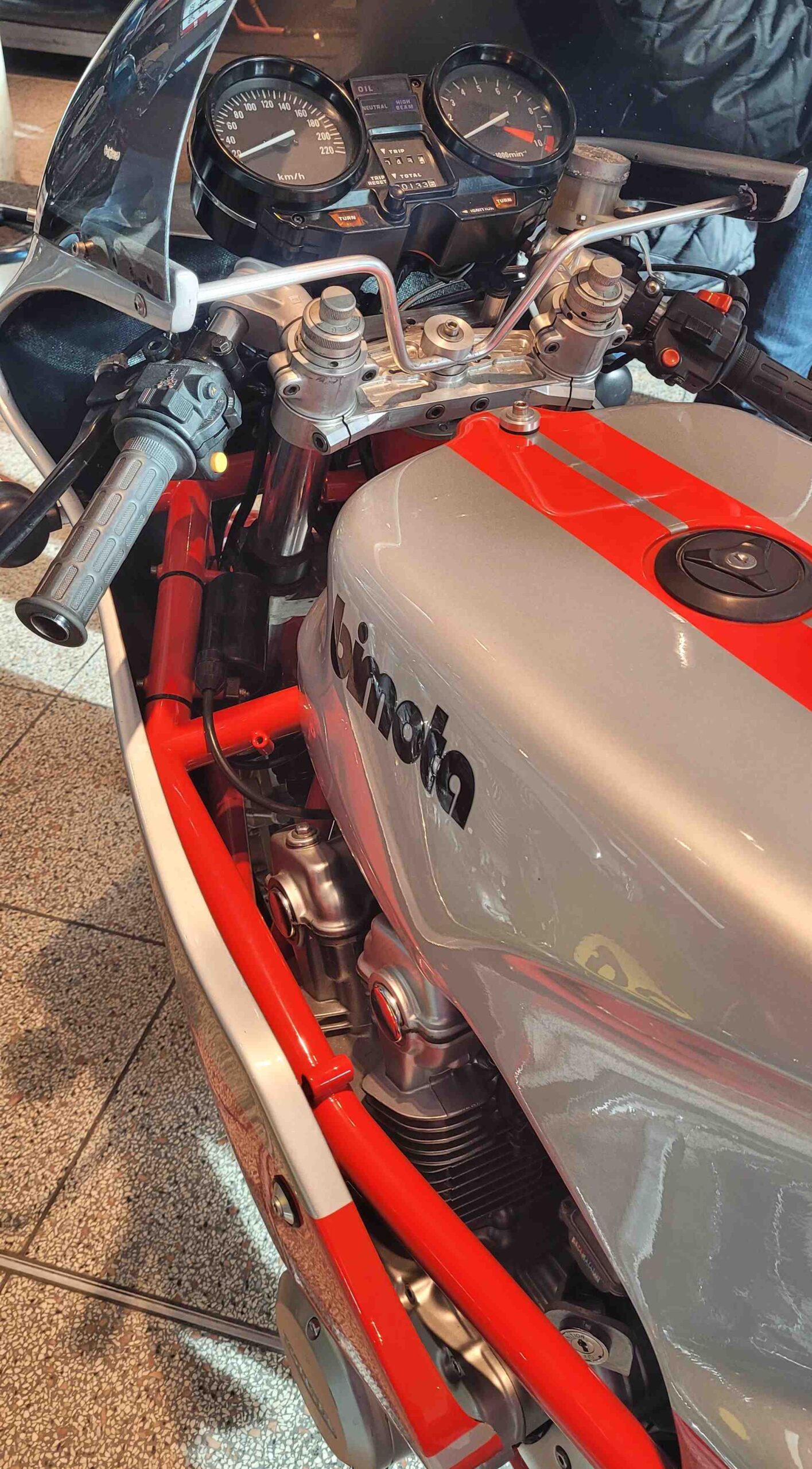
The HB2 is equipped with a Brembo braking system, consisting of two 280 mm discs with dual-piston fixed calipers at the front and a single 280 mm disc at the rear. The three-piece, riveted 16-inch aluminum wheels are a Bimota development.
At the front, an adjustable 40 mm Forcelle Italia telescopic fork with aluminum sliders and quick-release axles featuring foldable clamps is used. At the rear, a steel swingarm with a reinforcement brace and an almost vertically positioned, adjustable central shock absorber from De Carbon is installed.
In 1982, the HB2 cost 28,500 DM. A comparison with the Mercedes 190E, priced at 27,200 DM, highlights its premium price level.
